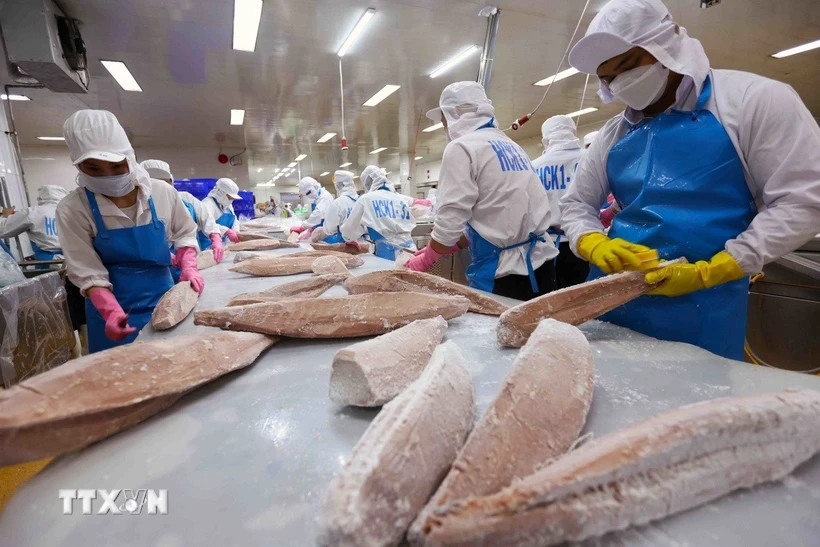
In the context of the constantly fluctuating global market, especially the US imposing reciprocal tariffs and increasing technical barriers in many major markets, what should Vietnamese seafood do to face great pressure on maintaining market share, competitiveness and export growth?
The answer lies in restructuring market access strategies, focusing on diversifying export markets, diversifying products and increasing added value, to minimize risks and ensure stable export growth.
According to the Vietnam Association of Seafood Exporters and Producers (VASEP), Vietnam's seafood exports in the first four months of this year recorded a strong recovery, reaching a turnover of 3.3 billion USD, an increase of 21% over the same period in 2024.
Shrimp continued to be the main product, leading with a 30% increase over the same period. Next was pangasius with a 9% increase.
China is the largest consumer market with an increase of 56%; followed by Japan with an increase of 22%, the US with an increase of 7% over the same period...
Despite returning to growth after a sluggish first quarter, exports to the US are still clearly affected by reciprocal tax policies and new technical barriers.
Mr. Phan Hoang Duy, Deputy General Director of Can Tho Seafood Import-Export Joint Stock Company (Caseamex), said that the company is currently exporting pangasius to about 30 markets; of which the US accounts for over 50% of output. However, tariff measures from this market are putting great pressure on costs and competitiveness.
Faced with that situation, Caseamex is proactively shifting exports to European and Asian markets, restoring relationships with old customers and cutting production costs.
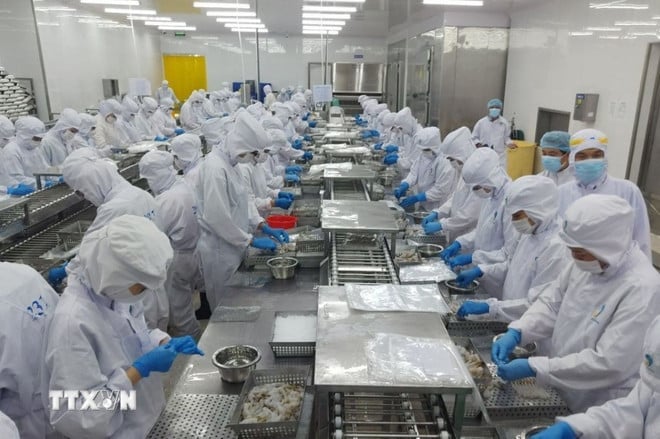
According to Ms. Le Hang, Deputy Secretary General of VASEP, businesses need to proactively shift to markets with potential and tariff incentives, especially taking advantage of free trade agreements (FTAs) such as EVFTA, CPTPP, RCEP... to expand exports to the EU, Japan, and South Korea - markets that are strongly opening up to Vietnamese seafood.
Businesses should aim to exploit new markets such as the Middle East and South America to diversify risks and reduce dependence on a few markets. For example, Vietnamese shrimp entering the EU is tax-free, while products from China are still subject to a tax rate of 12-20%.
Although there has not been a breakthrough, seafood exports to the EU in 2024 will still maintain a stable growth momentum, especially with key products such as whiteleg shrimp, tiger shrimp, tuna, pangasius and clams. This shows that the potential in traditional markets is still very large if businesses know how to adapt and improve product quality.
At the 31st Global Seafood Expo in Spain in May 2025, VASEP and 28 Vietnamese enterprises participated in the national pavilion to promote products and promote trade. This is a clear demonstration of efforts to diversify markets and reduce dependence on large markets with tariff barriers.
In the market expansion strategy, Singapore has emerged as a potential destination. Vietnam is currently Singapore's fourth largest seafood supplier, surpassing Malaysia, Indonesia and Norway for the first time.
In particular, Vietnam is leading in market share of fish fillets and chilled/frozen fish products - a product group with stable consumption demand in this market.
In order to support businesses in expanding their market share, the Vietnam Trade Office in Singapore closely coordinates with VASEP to organize trade promotion activities, connect trade, participate in exhibitions and fairs, and recommend businesses to focus on improving packaging, ensuring quality and strictly complying with import standards.
Meanwhile, Brazil is emerging as a strategic market in the South American region. With price advantages, stable demand and positive policy signals, this is considered a “new space” for Vietnamese pangasius to promote its strengths.
Currently, there are about 26 Vietnamese enterprises exporting to Brazil; including many big names such as Hung Ca, Cadovimex, Nam Viet, Hoang Long...
In particular, Brazil's recent official revocation of the suspension of imports of Vietnamese tilapia has created more opportunities for the industry to expand its products, in addition to pangasius, an item in which Vietnam currently holds a 38% market share. This is also the market in the first quarter of 2025, where seafood exports also had double-digit growth of over 70% over the same period.
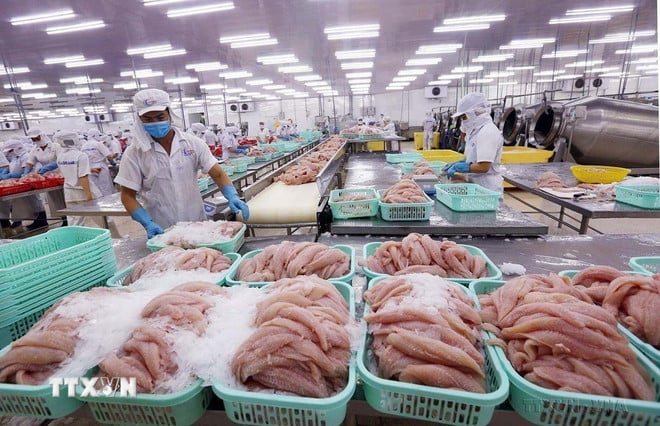
Brazil is also considering easing regulations on additives and phosphates, which have been a barrier to Vietnam’s deep-processed products. This is a positive sign to diversify the portfolio as well as promote value-added products such as breaded pangasius, fish balls, etc. to penetrate deeper into this market.
Along with market diversification, the seafood industry is also promoting product diversification.
Tilapia, one of the priority subjects for development, is expected to contribute to reducing market risks and expanding the structure of export products.
According to Mr. Tran Dinh Luan, Director of the Department of Fisheries and Fisheries Control, developing this farming species will create a balance alongside key products such as shrimp and tra fish.
Advantages from FTAs such as CPTPP, EVFTA... or bilateral trade agreements are also opening up great opportunities for businesses to minimize the impact from barrier markets such as the US.
Vietnamese enterprises are restructuring their export strategies, focusing on deeply processed products, increasing added value and seeking alternative markets to ensure sustainable growth.
Deputy Minister of Agriculture and Environment Phung Duc Tien said that in the context of a volatile world, market diversification is not only an urgent requirement in the short term but also a long-term strategy.
“Enterprises need to meet the diverse standards of export markets, including demanding markets such as Halal. If we prepare well, we can completely overcome barriers,” the Deputy Minister emphasized.
Deputy Minister Phung Duc Tien also noted that businesses need to review and focus on developing potential products in large markets such as China, while strengthening quality control, reducing costs, improving processing capacity and promoting trade.
Improving the “health” of the industry is the foundation for Vietnamese seafood to develop sustainably in a volatile global competitive environment./.
Source: https://baoquangninh.vn/thoat-bay-phu-thuoc-thuy-san-viet-nam-doi-mat-voi-thach-thuc-va-co-hoi-moi-3358879.html


![[Photo] Prime Minister Pham Minh Chinh chairs meeting on draft Resolution of National Assembly on International Financial Center in Vietnam](https://vphoto.vietnam.vn/thumb/1200x675/vietnam/resource/IMAGE/2025/5/22/d398664ff1a140629169ea5a24e1b4d0)
![[Photo] Press delegation meeting to visit Truong Sa and DK1 Platform](https://vphoto.vietnam.vn/thumb/1200x675/vietnam/resource/IMAGE/2025/5/22/6b8d232877ec421a9e8187d83b9f8006)


![[Photo] General Secretary To Lam chairs a working session with the Central Internal Affairs Commission](https://vphoto.vietnam.vn/thumb/1200x675/vietnam/resource/IMAGE/2025/5/22/3b7790f499da45b2803d8ae253207ef1)
![[Photo] Prime Minister Pham Minh Chinh chairs the Government's special meeting on law-making in May](https://vphoto.vietnam.vn/thumb/1200x675/vietnam/resource/IMAGE/2025/5/22/1c880aae96fd4e0894abc47a46fe19ba)
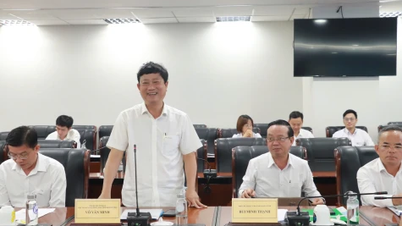


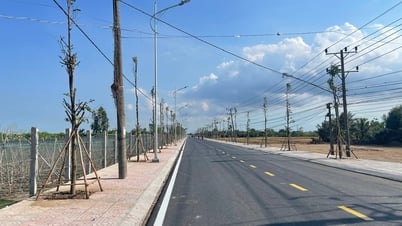



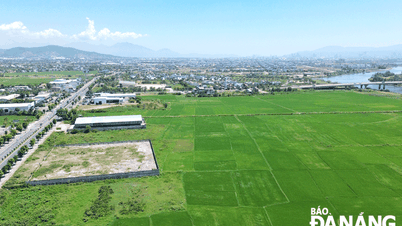








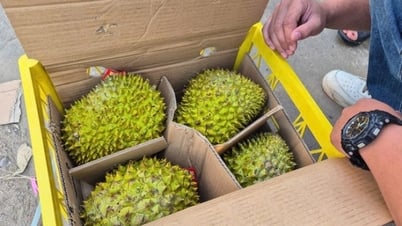
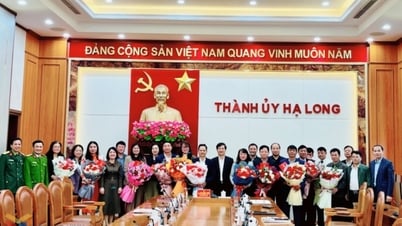


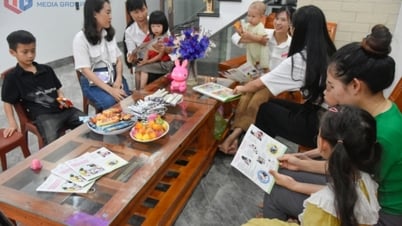












































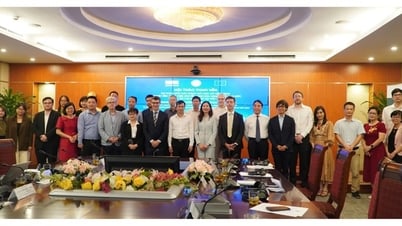




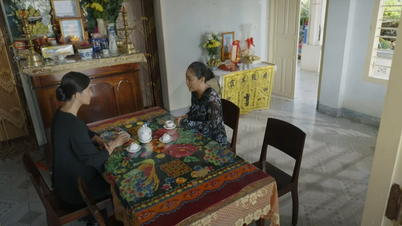




![[Podcast] Week introducing more than 500 OCOP products in Hanoi](https://vphoto.vietnam.vn/thumb/402x226/vietnam/resource/IMAGE/2025/5/22/d144aac2416744718388dbae3260e7fd)





Comment (0)